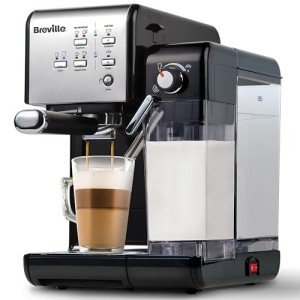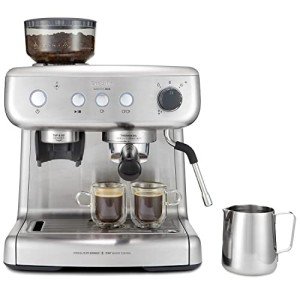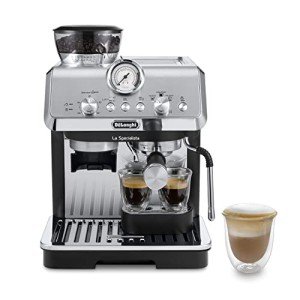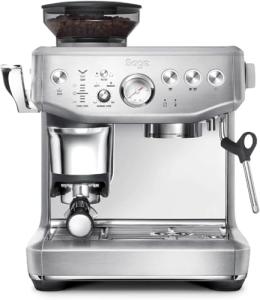Coffee lovers and barista enthusiasts alike understand the artistry involved in brewing the perfect cup of espresso or cappuccino. An espresso cappuccino maker set with a built-in grinder can be a game-changer for anyone wanting to bring the coffee shop experience home. In this blog post, we will explore the features, advantages, and best practices for using an espresso cappuccino maker set with a grinder. This comprehensive guide aims to equip both novice and seasoned coffee aficionados with the knowledge to make the most of their espresso machine.
Why Choose an Espresso Cappuccino Maker Set with Grinder?
An espresso cappuccino maker set typically includes an espresso machine and a grinder, offering numerous benefits:
- Freshly Ground Coffee: Grinding coffee beans right before brewing elevates the flavor profile, giving you a fresher and more aromatic cup.
- Convenience: Having both a grinder and coffee maker in one unit saves space on your kitchen counter.
- Customization: With a grinder, users can choose the grind size and brew strength, allowing for personalized coffee experiences.
Table 1: Comparison of Espresso Cappuccino Maker Sets
| Feature | Basic Model | Mid-range Model | Premium Model |
|---|---|---|---|
| Built-in Grinder | Yes | Yes | Yes |
| Pressure Pump | 15 Bar | 18 Bar | 19 Bar |
| Milk Frother | Manual | Automatic | Automatic + Steam Wand |
| Capacity | Single Serve (1-2 cups) | Dual Serve (2-4 cups) | Commercial (4+ cups) |
| Price Range | £100 - £250 | £250 - £500 | £500+ |
Features to Look For
When shopping for an espresso cappuccino maker set, there are certain features to consider, ensuring the best performance and ease of use:
-
Grinder Type:
- Burr Grinder: Delivers consistent grinds, crucial for espresso.
- Blade Grinder: Less expensive but offers uneven grinds.
-
Pressure Pump System:
- Opt for machines with at least a 15-bar pressure pump to extract maximum flavor.
-
Milk Frothing Options:
- Look for machines with either a manual or automatic milk frother to craft the perfect cappuccino.
-
Temperature Control:
- Ensure that the machine has reliable temperature control for optimal brewing.
-
Ease of Cleaning:
- Choose models with removable components and easy-to-clean surfaces.
Steps to Make a Perfect Espresso or Cappuccino
To get the most out of an espresso cappuccino maker and grinder, follow these steps:
-
Choose Quality Coffee Beans: Start with high-quality, fresh coffee beans. The choice between Arabica and Robusta can impact taste and strength.
-
Grind the Beans: Use the built-in grinder to grind the beans to the desired consistency (fine for espresso).
-
Measure the Grounds: A standard espresso shot requires about 18-20 grams of coffee.
-
Tamp the Grounds: Tamping the coffee grounds evenly in the portafilter is essential for proper extraction.
-
Brew: Attach the portafilter to the machine and start the brewing process. Wait for about 25-30 seconds for ideal extraction.
-
Steam the Milk: If making cappuccino, use the milk frother to steam the milk until it reaches the desired temperature and texture.
-
Combine: Pour the steamed milk over the espresso, aiming for a 1:1 ratio for cappuccino.
Maintenance Tips for Espresso Machines
Maintaining your espresso cappuccino maker is vital for longevity and performance:
- Regular Cleaning: Follow the manufacturer’s cleaning instructions, including regular descaling.
- Change the Water: Use filtered water for brewing and change it frequently to avoid mineral buildup.
- Inspect the Grinder: Clean the grinder to ensure consistency in grind size and avoid flavor contamination.
- Replace Parts as Needed: Watch for wear on seals and other components and replace them as necessary.
FAQ Section
Q1: How often should I clean my espresso machine?
A: It's recommended to clean your espresso machine after every use. Conduct a deeper clean (descaling) once every 3-6 months, depending on usage and water hardness.
Q2: Can I use pre-ground coffee in these machines?
A: While you can use pre-ground coffee, freshly ground beans provide the best flavor and aroma—essential for creating quality espresso.
Q3: What is the best grind size for espresso?
A: A fine grind is optimal for espresso, typically similar to table salt. Adjusting the grind size can help you get the flavor profile you desire.
Q4: How do I know if my espresso is extracted correctly?
A: Properly extracted espresso should be rich and have a layer of crema. If it's bitter, it may be over-extracted; if sour, it may be under-extracted.
Q5: What’s the difference between an espresso machine and a cappuccino maker?
A: An espresso machine focuses on brewing espresso, while a cappuccino maker often comes with milk frothing features, allowing for both espresso and cappuccino preparation.
An espresso cappuccino maker set with a grinder can transform your home brewing experience dramatically, allowing for customization, quality, and convenience in crafting coffee. By understanding the features to look for and following best practices for brewing and maintenance, anyone can enjoy café-quality espresso and cappuccinos from the comfort of their kitchen.
Investing in this equipment not only enhances daily routines but also deepens one's appreciation for the craft of coffee brewing. So whether you are seeking a simple model or a high-end machine, there is undoubtedly an espresso cappuccino maker set out there to suit your needs. Happy brewing!






